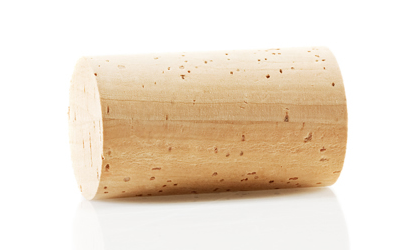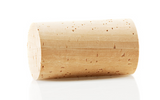Natural Cork Closures
Cork stoppers ensure the sealing of wine in a glass recipient. If this sealing is prolonged over time it promotes the wine’s maturing, which is to say there is an evolution by means of numerous physical and chemical processes between the components or between these and the substances inside the bottle. This gradual evolution of the bottled wine occurs in an environment with a very low oxygen content, but which is necessary and sufficient for the correct ageing of the wine. Until now, only the natural cork stopper has been able to provide this perfect balance, allowing for the correct evolution of the wine and the formation of the much appreciated “bouquet.” The bouquet consists of a set of pleasant aromas, which develop during the maturation period of bottled wine. It is a valued element, which depends on the intrinsic quality of the wine and the conditions in which it matures.
The hermetic quality ensured by the cork stopper is not only indispensable to maturing wines, but is also necessary for wines which will be consumed more quickly. Natural stoppers enable the excellent conservation of wines while preventing interference in the harmony of their components, conferring a sign of quality to the wine. Due to cork’s cell construction, compressibility and elasticity, it is the only closure capable of assuring this type of conservation in any type of wine.
Only natural material is able to adapt correctly to the internal irregularities of the neck, guaranteeing perfect sealing, even if the glass expands or contracts, which can happen when the ambient temperature changes during shipping or storage.
A perfect seal can be expected for decades. This sealing can be prolonged for even longer when high-quality cork stoppers are used, bottling rules are complied with and it is stored in ideal storage conditions (suitable temperature, pressure and humidity and without great variations in temperature during the day or seasons of the year). Find out how to store bottled wine.
The most common formats in the market are:
The hermetic quality ensured by the cork stopper is not only indispensable to maturing wines, but is also necessary for wines which will be consumed more quickly. Natural stoppers enable the excellent conservation of wines while preventing interference in the harmony of their components, conferring a sign of quality to the wine. Due to cork’s cell construction, compressibility and elasticity, it is the only closure capable of assuring this type of conservation in any type of wine.
Only natural material is able to adapt correctly to the internal irregularities of the neck, guaranteeing perfect sealing, even if the glass expands or contracts, which can happen when the ambient temperature changes during shipping or storage.
A perfect seal can be expected for decades. This sealing can be prolonged for even longer when high-quality cork stoppers are used, bottling rules are complied with and it is stored in ideal storage conditions (suitable temperature, pressure and humidity and without great variations in temperature during the day or seasons of the year). Find out how to store bottled wine.
The most common formats in the market are:

The use of longer stoppers is common in wines associated with longer bottled maturing. However, it should be noted that the quality of the seal over time depends more on the appropriate choice of the diameter of the stopper than on its length. Ideally, a stopper should be used that is at least 6 mm wider than the smallest diameter of the neck of the bottle, taking care that it should not be compressed by more than 33% of its diameter when inserted into the bottle, as this may damage its cellular structure.
Classification of natural stoppers
Traditional categories of the commercial classification frequently have the following names, according to visual criteria: Flower; Extra; Superior; 1st; 2nd; 3rd; 4th; 5th.
The classification is done based on a sample of several corks (varies from producer to producer) with ranges of variability accepted and agreed between the producer and the user. This sample will serve as a benchmark for the orders subsequently made.
There are several criteria that help to assess the quality of the cork: density, humidity, surface treatment, extraction force, visual pattern and sampling.
Classification of natural stoppers
Traditional categories of the commercial classification frequently have the following names, according to visual criteria: Flower; Extra; Superior; 1st; 2nd; 3rd; 4th; 5th.
The classification is done based on a sample of several corks (varies from producer to producer) with ranges of variability accepted and agreed between the producer and the user. This sample will serve as a benchmark for the orders subsequently made.
There are several criteria that help to assess the quality of the cork: density, humidity, surface treatment, extraction force, visual pattern and sampling.
The CQC has introduced a simplified visual grading system for ranking corks by standardized visulal grades.

